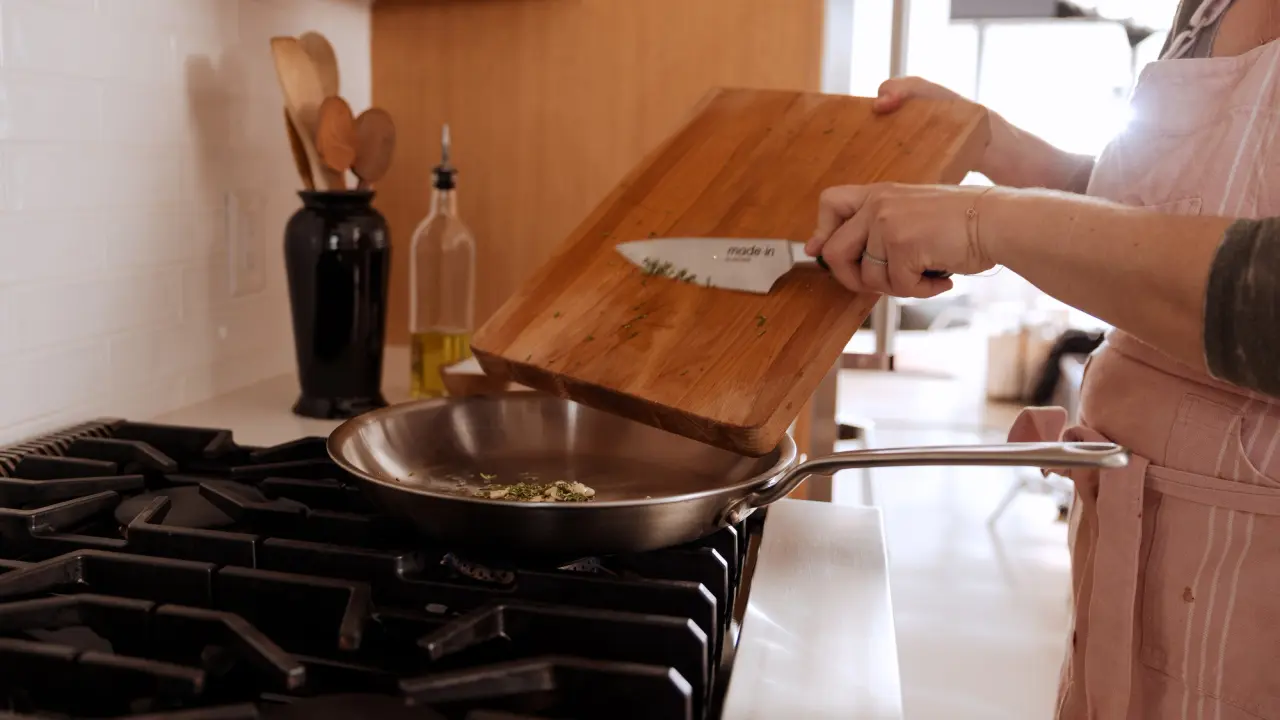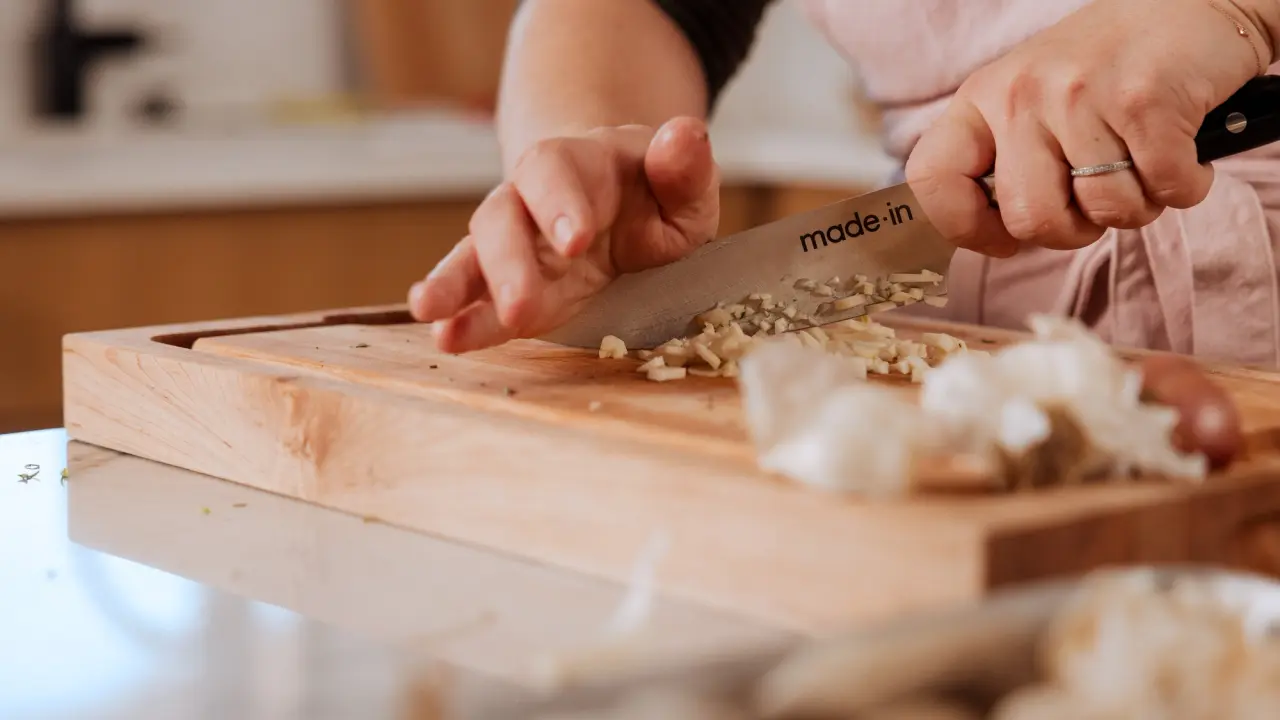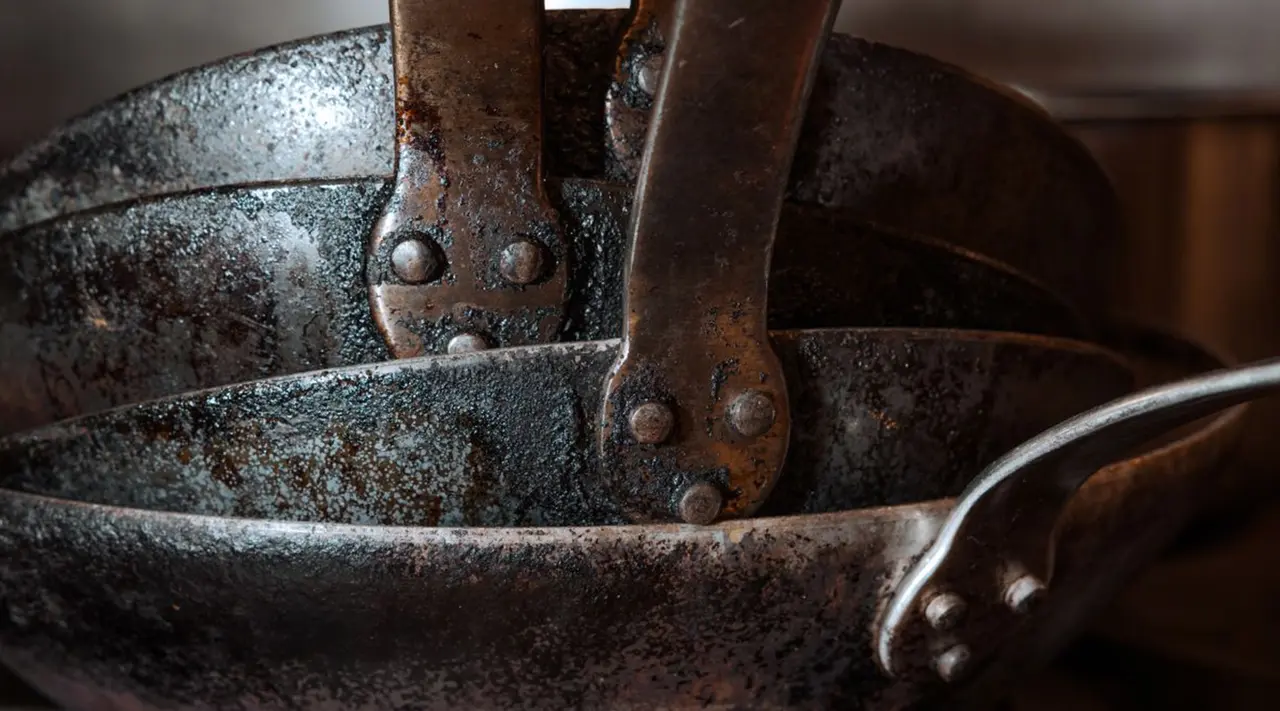Google “cutting boards” and you’ll pull up an overwhelming list of options ranging from familiar (wood, plastic) to questionable (stainless steel, white marble, and—for some unidentifiable reason—pure salt). To our minds, however, the former are the only two types worth considering. Plastic and wooden cutting boards are simultaneously sturdy yet soft enough to keep from dulling your knife’s edge, and are relatively easy to clean.
The choice really comes down to your personal preference, your budget, and how much maintenance you’re willing to do on a regular basis. Read on for our insight into the differences—and merits—of both.
Wooden Cutting Boards (or Butcher Blocks)

Wooden cutting boards and butcher blocks aren’t just beautiful—they’re also a pleasure to use, providing a relatively soft landing pad for your knife that many cooks prefer to the hard, unyielding surface of plastic. Like we mentioned earlier, that softness is easier on your knife than plastic, meaning you won’t have to sharpen as frequently.
With that soft, porous texture comes a small caveat, however, which is that wooden cutting boards need a little extra TLC to keep them in good working condition. While plastic boards can go straight in the dishwasher, wooden boards need to be washed by hand, as well as regularly treated with a food-safe mineral oil to prevent them from drying out, becoming brittle, and even splitting or cracking over time.
The other thing to consider about a wooden board is food safety. Because of wood’s natural porosity, it can harbor harmful bacteria more easily than hard, nonporous materials like plastic— though, as some studies show, harder woods like maple and oak are actually able to trap and kill harmful bacteria. To totally eliminate the risk of cross-contamination, however, it may be worth it to keep separate cutting boards for things like raw meat and vegetables. Also make sure to always thoroughly wash your wooden cutting board and allow it to dry completely after using.
Plastic Cutting Boards
Compared to wooden cutting boards, plastic cutting boards are inexpensive, lightweight, and easy to clean—but much less attractive. And while their comparative hardness makes them a little less gentle on knives than wooden ones, it also means that you can more easily sanitize them. Unlike wood, plastic cutting boards are totally dishwasher-safe, meaning you won’t have to clean them by hand. Since they’re also relatively thin and lightweight, they’re also easier to lift and maneuver.
Keep in mind, however, that because of their hardness, plastic cutting boards don’t bounce back the way wooden cutting boards do. This means that they scratch more easily, creating pockets for bacteria to hide out in. Plastic cutting boards therefore need to be replaced more frequently than wooden ones.
How to Choose the Right Cutting Board for Specific Tasks
Meat, Poultry, and Fish
While we consider a wooden cutting board to be an all-purpose tool, we admittedly get a little nervous when it comes to prepping raw chicken, salmon, and other potentially risky foods. To be on the safe side, we recommend using a plastic cutting board when working with raw poultry, fish, and meat. Because it can be quickly and thoroughly sanitized, a plastic board is less likely to spread food-borne illnesses like salmonella.
That doesn’t mean you’ll have to give up your butcher block, though. You can still carve your Thanksgiving turkey or rib eye steak on a wooden cutting board once the meat is fully cooked (just make sure your board has a built-in groove to collect juice, as seen in our Butcher Block).
Fruits and Vegetables
Both wooden and plastic cutting boards work well when it comes to prepping fresh fruits and vegetables.That being said, many cooks prefer wooden for repetitive cutting tasks such as dicing onions and other vegetables, as the softer material won’t dull your knife as quickly. Like we mentioned earlier, it’s worth it to have three separate cutting boards for raw meat, fish, and fruits/vegetables—even if it’s just for a little peace of mind (and to keep your sliced pineapple from tasting like shrimp.)
Bread and Baked Goods
For slicing baked goods like pies, cakes, and crusty loaves of bread, either a plastic or a wooden cutting board will do the trick—though we do slightly favor wood for its coarser texture, which can help keep items from slipping. If you’re worried about cross-contamination, we’d recommend having another separate board for baked goods and other ready-to-eat items.
Ready to Shop?

Like a chef knife, a cutting board is something you’ll most likely be using every day. If you don’t think a wooden cutting board is your style—i.e., you don’t see yourself handwashing and oiling it on a regular basis—it’s probably not the right pick. A plastic cutting board is a great, low-maintenance, budget-friendly option, and one we can recommend for any home cook.
If you do happen to be a member of the wooden cutting board fan club, however, we recommend our Beechwood Butcher Block. Sporting a juice groove on one side and a flat, even cutting surface on the other, it’s perfect for everything from mincing garlic to butchering a whole chicken. Plus, the visible wood grain makes it an especially gorgeous serving piece for bread, cheese boards, and charcuterie.






























